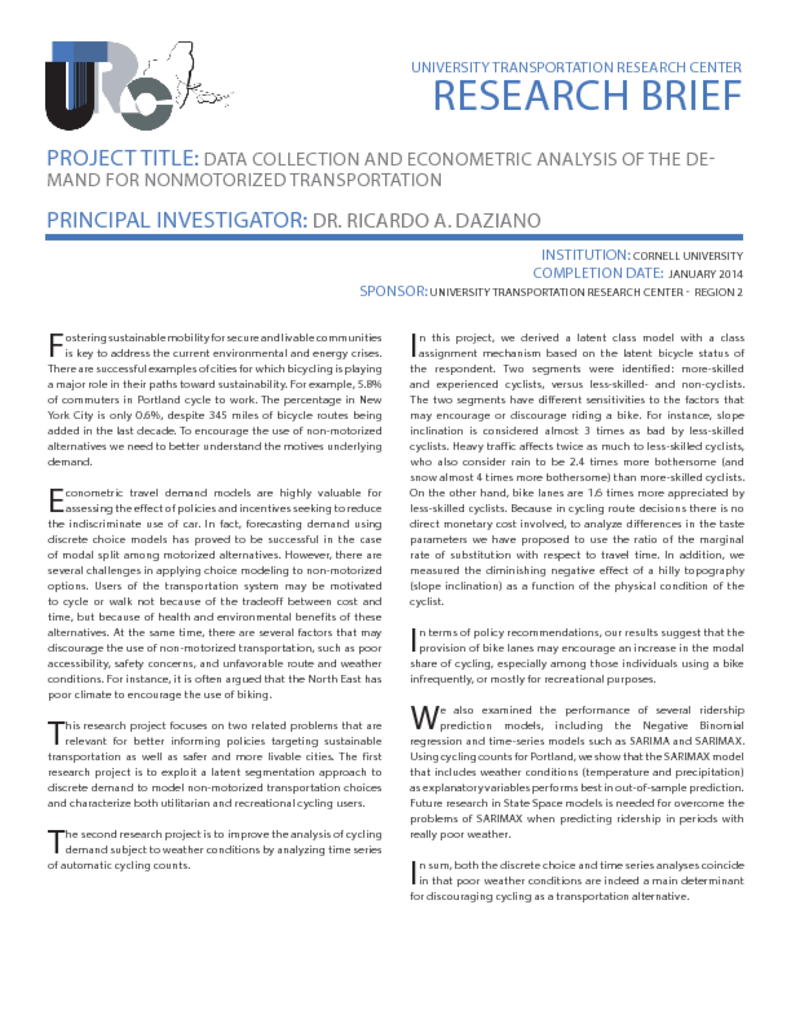In this project, we derived a latent class model with a class assignment mechanism based on the latent bicycle status of the respondent. Two segments were identified: more-skilled and experienced cyclists, versus less-skilled- and non-cyclists. The two segments have different sensitivities to the factors that may encourage or discourage riding a bike. For instance, slope inclination is considered almost 3 times as bad by less-skilled cyclists. Heavy traffic affects twice as much to less-skilled cyclists, who also consider rain to be 2.4 times more bothersome (and snow almost 4 times more bothersome) than more-skilled cyclists. On the other hand, bike lanes are 1.6 times more appreciated by less-skilled cyclists. Because in cycling route decisions there is no direct monetary cost involved, to analyze differences in the taste parameters we have proposed to use the ratio of the marginal rate of substitution with respect to travel time. In addition, we measured the diminishing negative effect of a hilly topography (slope inclination) as a function of the physical condition of the cyclist.




